Growing grass in clay soil
cdw1982
12 years ago
Featured Answer
Sort by:Oldest
Comments (13)
u22081
12 years agoRelated Discussions
Growing new grass in shady area with high clay content soil
Comments (4)A picture would be worth a thousand words here. Bringing in soil might be good if you suspect the original soil has been washed away for some reason. Some trees will react to hard soil by sending their roots out at the surface. Then as the tree ages, the roots become larger and expose themselves above the surface. If that is what has happened, then adding soil on top of the natural grade will cause you drainage problems and could cost you extensively if water pours into your basement (worst case). Adding soil should be done with considerable forethought as to the consequences. Another thought on adding soil is to keep it lower than the root bark on the trees. Tree roots flare out from the base of the trunk. If you bury the root flare completely, then you are burying tree bark. Tree bark will often rot when it is below the soil level. It is best if you leave some root flare above the soil level to be sure you are not burying tree bark. Tilling is a bad idea for many reasons. One of the obvious ones is that you have roots everywhere. You can't till tree roots. A much less obvious reason is that tilling destroys soil structure by fluffing it up. Once it is fluffy it has to settle again. That process takes 3 years. When it finally settles it will settle unevenly leaving your surface bumpy. Grass seed should never be mixed in with surface soil. It always goes on top of the surface. Many people recommend "scratching" it into the surface but that is not necessary. Nor is covering it with straw. All you need to do is loosen the soil at the surface (1/16 inch deep) before you apply the seed, then apply the seed, and finally roll the seed down with a water filled roller (rented). Seed should remain at the surface. If you insist on straw, as goren said, be careful not to use hay. Hay is forage for animals and has seed in it. Straw is the left over after the seed is threshed out. New seed must be watered 3x per day at breakfast, lunch, and dinner for about 10 minutes. The idea is to provide enough consistent moisture for the seed to swell and open (germinate). Unfortunately these are the exact conditions that crabgrass seed needs. For this reason grass seeding is most successfully done in the fall after crabgrass has stopped germinating. Also grass sprouted now will have weak roots that cannot stand up to the summer heat and dry weather. That might not be that much of an issue in your area. Don't assume you have clay. Fill a mayonnaise jar half full of dirt. Then fill the jar completely with water and a drop of soap. Swish it around and let it settle. You will see rocks and sand settling immediately to the bottom of the jar. In an hour all the silt will have settled. At that time if you have clay, the water will be cloudy. Let it sit another day and see if the water clears up. If it clears then you do not have clay. Clay will cloud the water for days and days. There are several conditions of minerals that cause soil to seem to be clay when in fact there is no clay at all. Don't be too surprised by this. Adding gypsum without doing this test and a soil chemistry test can be a mistake. I disagree with goren on mowing height. The only grasses that need to be mowed lower than 3 inches are bermuda, centipede, bentgrass, and some zoysias. Kentucky bluegrass (which you can't grow in shade) should be no lower than 3 inches. Fescues and all the other grass types should be mowed back to 4 inches. Usually this is a mower's highest setting. Grass grown in the shade needs to be longer simply so it can photosynthesize. Can you post pictures showing the tree roots and one from a distance showing the trees with the canopy?...See Moreclay soil want to plant grass
Comments (14)If you went crazy for the full 3" depth - about 18 yards... which is a good size dump truck full... An alternative (If you have a pick up truck) is to just bring in a couple loads of fine ground mulch or compost and spread it on top of the soil as budget/time allows... just sling it evenly across the whole thing... The absolute minimum you really need enough to cover it with 1/4" -- but that's probably only 2 yards worth... It will go a long way towards getting it softened up and bringing life back... While you are at it -- get a soil analysis done by the UGA extension office... You will probably find that the reason nothing grows well is that your soil is Mineral Deficient -- not that it is solid clay.... The next thing you can do at home is that is a soil structure test (The test with your dirt in a mayonnaise jar full of water...) You will find that a *Little* clay goes a really long way towards making what everybody calls "Georgia Red Clay" soils... and that for the most part, the USDA actually considers our soils to be "Loam" and "Sandy loam" and "Sandy clay loam" -- which are mostly a mixture of Sand + Silt + a little clay... NOT mostly clay with a little sand and silt as you would guess by looking at how it packs up your shoes... The good news about this is that our soils can be very fertile if we can get the Organic Material and minerals back into them... The bad news is that they are Ancient and Heavily Eroded (Leached out)... and so they won't grow anything right if until we do... Thanks John...See MoreGrowing Grass Over Clay
Comments (2)The soil should actually be fine (plenty of us grow grasses in clay soils). But you can certainly remove the top six inches of soil in that area and replace with a good quality top soil if you wish. Don't remove too much less than that if you replace the soil as the roots dislike moving from one soil type to another. They'll tend to do what they would in a clay pot--stop at the interface, which will lead to short-rooted grass that never looks great. Other than that, seed, and you can gently rake the surface to loosen it up if you want. It's already been heavily disturbed, so the normal rules about not tilling don't apply, although I'd still avoid it. On a slant, I'd be inclined to put burlap down to reduce erosion while the grass grows. Tack it down at least at the edges well enough that flowing water won't easily go under the burlap and lift it. Water gently two to three times a day until it sprouts fully (about a month if the mix contains bluegrass, two weeks if it's fescue and/or ryegrass), then back off slowly on the watering to allow the grass to adjust....See MoreCompact non-invasive grass for clay soil
Comments (3)Little Bluestem is very vertical when it blooms and would be about that height. There's some nice cultivars available such as 'The Blues' which is very blue, 'Prairie Blues' is another. Some types are more red in fall. You might pull up Santa Rosa Gardens and look at the different types if you think this might work for you. It grows naturally in clay....See Moredchall_san_antonio
12 years agojohn0958
12 years agodchall_san_antonio
12 years agojohn_in_sc
12 years agocdw1982
11 years agotiemco
11 years agojeffwul
11 years agoHeartofmyHeart
11 years agodchall_san_antonio
11 years agoshmoehawk
11 years agoSerenity Lawn Service
11 years ago
Related Stories
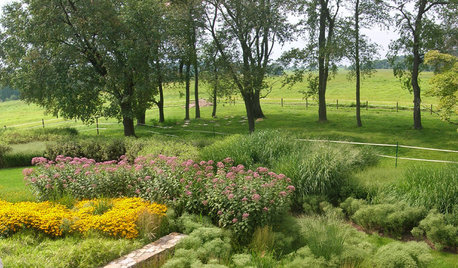
GARDENING GUIDESHow to Stop Worrying and Start Loving Clay Soil
Clay has many more benefits than you might imagine
Full Story
GARDENING GUIDESGardening Solutions for Heavy Clay Soils
What’s a gardener to do with soil that’s easily compacted and has poor drainage? Find out here
Full Story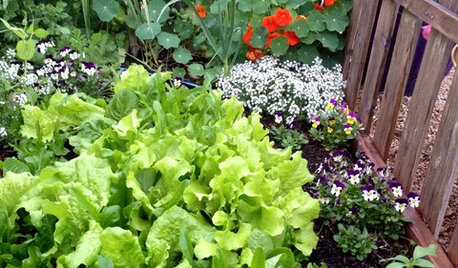
GARDENING GUIDESThe Poop Scoop: Enrich Your Soil With Good Old Manure
Get over the ick factor already — this natural super-ingredient for soil has so many benefits, you'll wonder why you ever went chemical
Full Story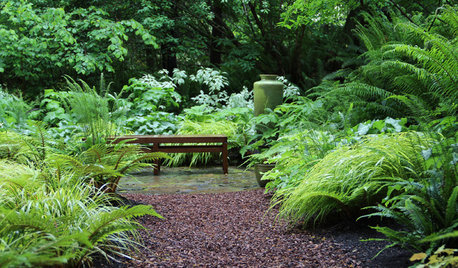
GARDENING GUIDES10 Solutions for Soggy Soil
If a too-wet garden is raining on your parade, try these water-loving plants and other ideas for handling all of that H2O
Full Story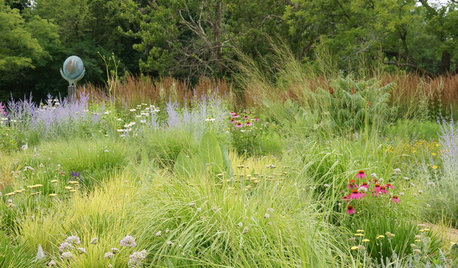
GARDENING GUIDESGet the Dirt on Your Garden’s Soil
Understand how your soil supports your plants so you can ensure your garden’s success
Full Story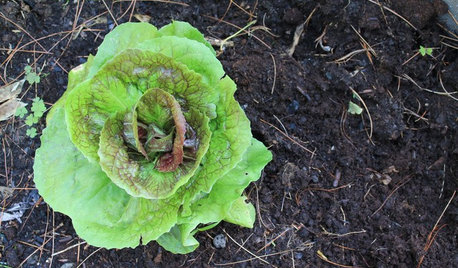
FARM YOUR YARDHow to Get Good Soil for Your Edible Garden
The nutrients in your soil feed the plants that feed you. Here are tips on getting it right — just in time for planting season
Full Story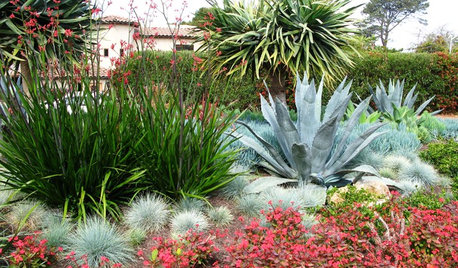
GARDENING GUIDESGardening Solutions for Dry, Sandy Soils
Has your desert or beachy site withered your gardening creativity? Try these ideas for a beautiful, easy-care landscape
Full Story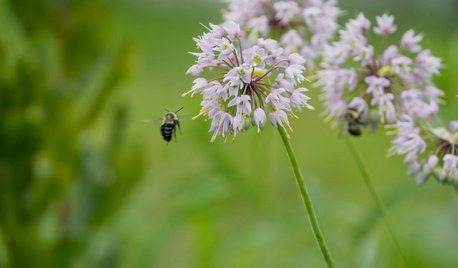
GARDENING GUIDES9 Clay-Busting Native Flowers for Summer Sun
These plants survive and even thrive in tough clay soil east of the Rocky Mountains
Full Story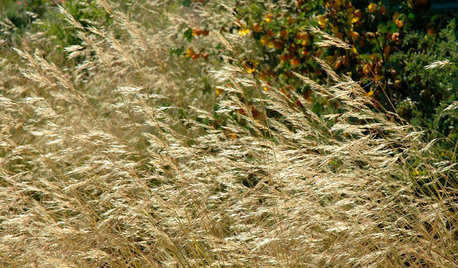
GARDENING GUIDESGreat Design Plant: Purple Needle Grass, California’s State Grass
The long-lived, drought-tolerant Stipa pulchra is as admired for its benefits as for its good looks
Full Story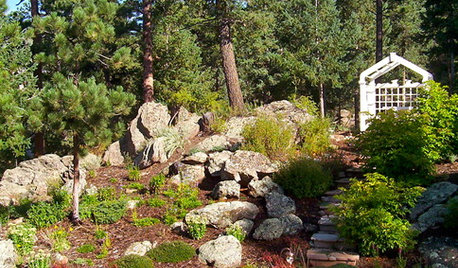
GARDENING GUIDESHave Acidic Soil in Your Yard? Learn to Love Gardening Anyway
Look to acid-loving plants, like conifers and rhododendrons, to help your low-pH garden thrive
Full StorySponsored
Columbus Area's Luxury Design Build Firm | 17x Best of Houzz Winner!




magoo1